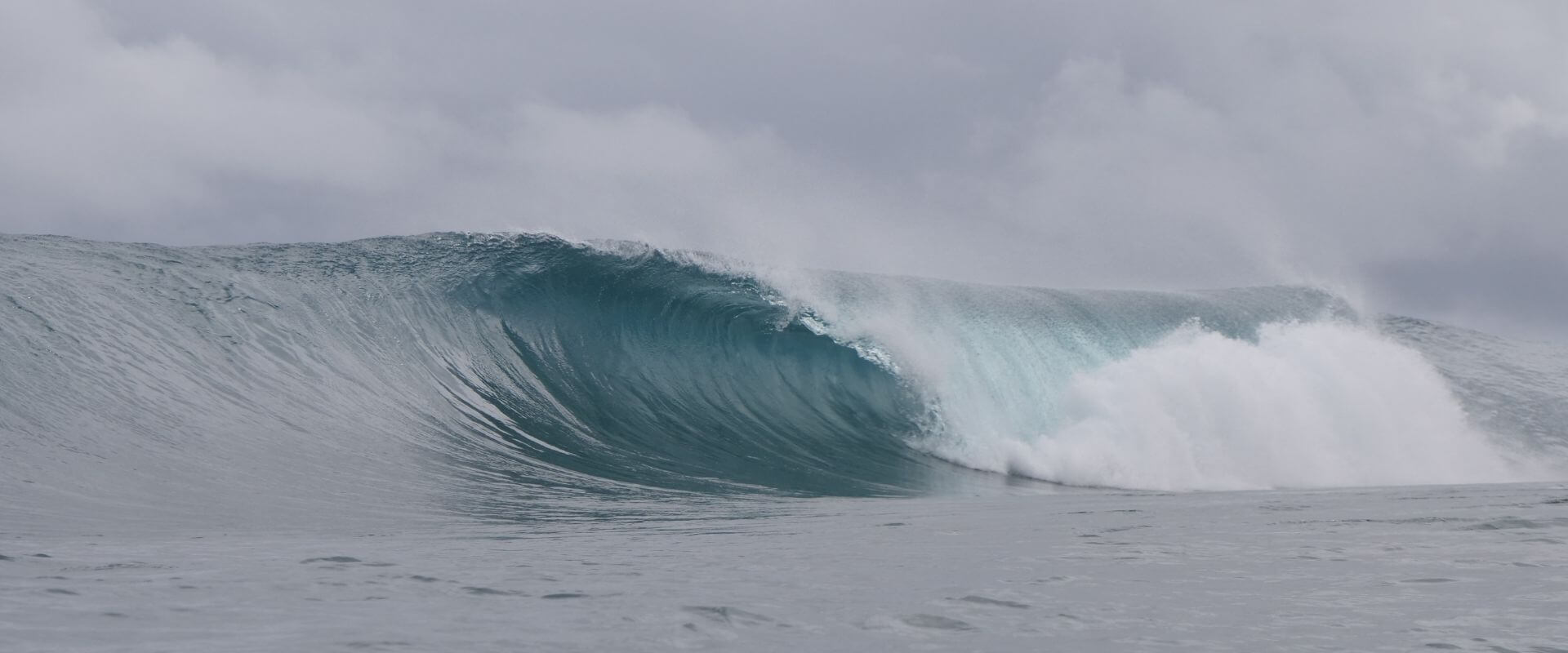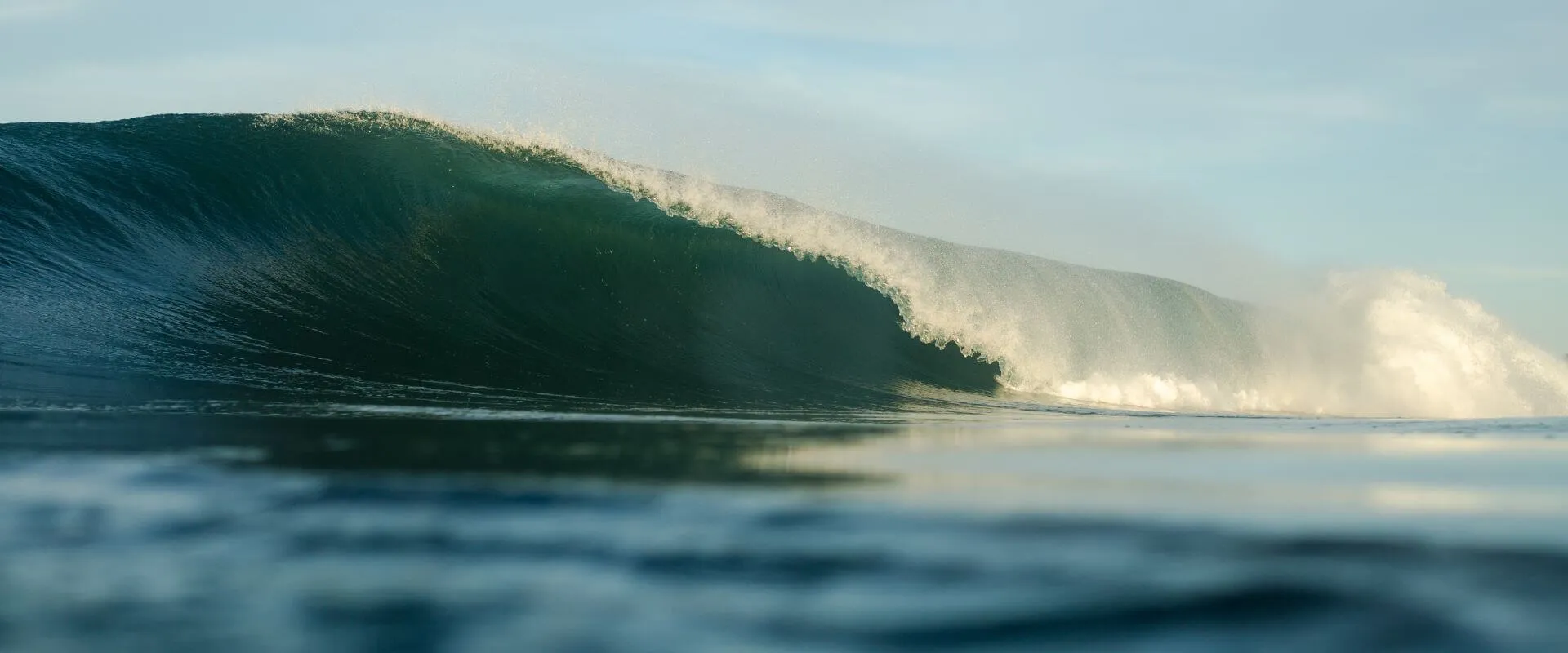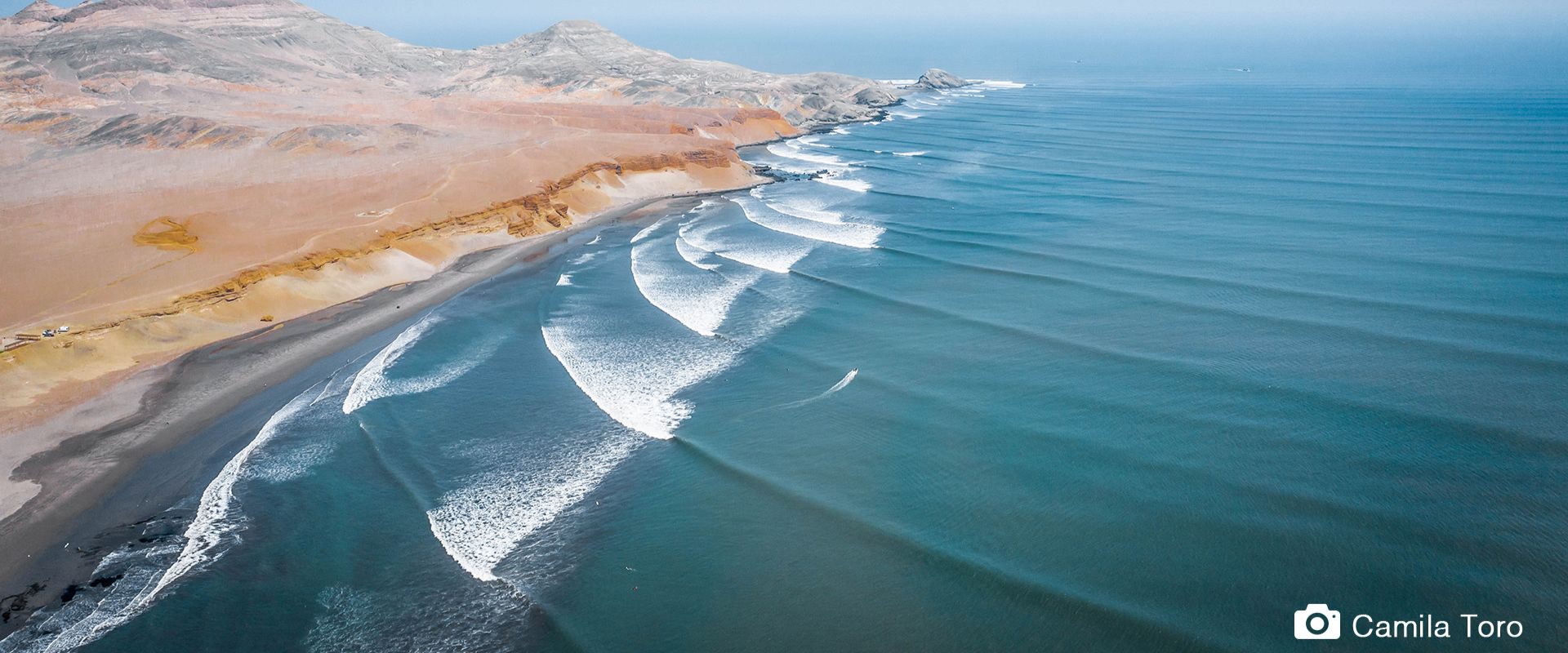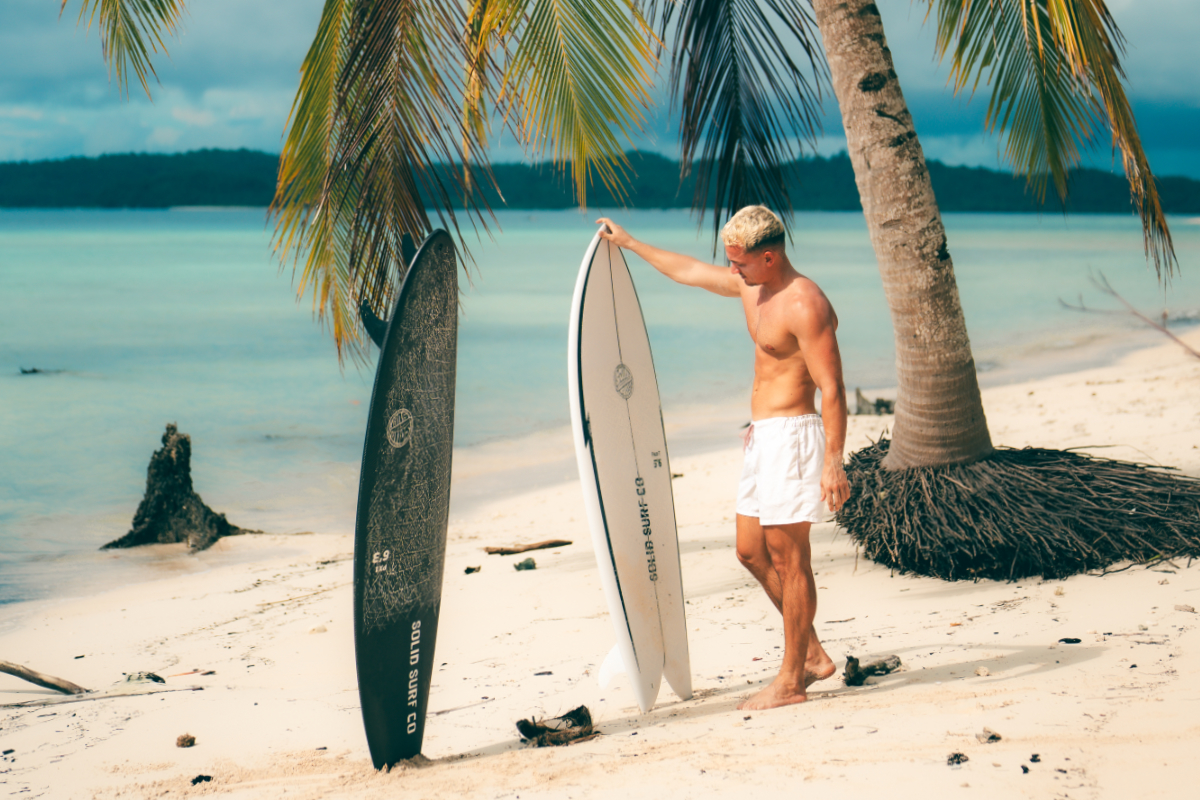The formation of waves is one of the natural wonders of the world! These undulating masses of water can be as complex as they are beautiful – dancing rhythmically around the world’s oceans and transferring huge amounts of energy across vast distances of open water.
For surfers, waves are the very foundation of their sport. Understanding how they are formed and some of the science behind what causes them to act the way they do, can help us to predict the best times to catch them and make the difference between a bad session and a great one!
In this article, we will explore what waves are, how they form, some different types of waves, and why understanding them is crucial for anyone who loves to ride them!
What Are Waves?
A wave is a disturbance in the surface of our oceans caused by wind blowing across the water and transferring the energy from the air into the sea. These disturbances cause high points and low points – peaks and troughs – to appear in the water, with the distance between these peaks being referred to as the wavelength. The amount of time between one peak and the next is known as the wave period.
Although there are many factors that affect how waves are generated and the exact science is still not completely understood – their behaviors can be predictable to an extent! In the open ocean, these waves don’t actually move across the surface, but act in much the same way as a carpet or rope being flicked, transmitting their energy to their neighbor!
As the energy travels through the ocean we can track and forecast its movements up until the point it reaches the shore and unloads itself as surfable waves!

How Waves Form
The journey of a wave begins as energy emitted from the sun entering our atmosphere – that energy drives wind and weather patterns that stir up the oceans. The area of ocean containing this wind is called the fetch area – the stronger the wind in the fetch area and the longer it blows for, the more energy is passed into the water and the bigger the waves it will create! Big storms in the middle of the ocean can create swell that travels thousands of miles until it reaches the coastline, briefly becoming the rideable slope of water that surfers crave!
As these swells travel across open water, waves of different wavelengths interfere with each other and either cancel each other out or combine together to create larger waves – the waves are organizing themselves into groups that we call sets! A swell that has time to organize itself like this is referred to as groundswell and is usually identified by having a wave period of 10 seconds or higher. When you get to your favorite spot and see those beautifully organized lines of waves coming into the beach, that’s groundswell! The stronger the swell and the further it travels, the more time there is for this process to take place!
Swells with a period of less than 10 seconds are usually referred to as windswell. When you are surfing a windswell, it’s likely that the wind you can feel at the surf spot is part of the same weather system that is producing the surfable waves at the beach. The waves are likely to be smaller, not as powerful, and with less defined sets.

Types of Waves
The energy of the swell is moving across the surface of the water and also down into the water below. In the deep ocean, the energy that goes down is eventually lost, but as we approach the shallower waters around the coast, the ocean floor starts to take effect on the traveling swell! In simple terms, the energy at the bottom slows down causing the top of the wave to become unstable and fall forwards… breaking waves! There are a few main ways this can happen:
Beach Break: The most typical kind of wave you will find – a beach break is caused by swell coming into contact with a shallow sandy ocean floor. The waves will break first at the shallowest point – on top of the sandbars. As the sand can shift and move around under the water, beach breaks can be constantly changing!
Point Break: When a headland causes the swell to find shallow water it can bend or wrap around a point. The wave will tend to break closest to the headland and peel away into the deeper water, creating consistent and often long rides!
Reef Break: Solid sea beds made of reef or rock create super consistent and reliable foundations for surfable waves! The shape of the reef defines the characteristics of the waves, with gentle changes in depth creating more mellow rides and abrupt changes in depth causing faster and hollower waves!
These different types of waves, along with understanding other factors such as tides and local winds, can help you to make better choices about when and where to surf. Knowing the characteristics of each wave type helps in predicting the best conditions for a great surf session!

Why Understanding Waves Is Important for Surfers
Understanding waves is an essential skill for surfers for several reasons; it helps improve your surfing, enhances safety, and boosts overall enjoyment!
Improving Skills: Knowing how waves are formed and why they work the way they do can make you a better surfer. Choosing the right waves to ride for your skill level and the right time to ride them – the more you know, the better you can surf!
Enhancing Safety: Waves can be powerful and difficult to predict, making safety a top priority. Knowing how to read the water and what to expect helps you recognize hazardous conditions. Being informed allows you to take precautions and make safer choices while surfing!
Boosting Enjoyment: The more you understand what’s happening, the more you’re going to enjoy your surfing! Knowing what to expect allows you to relax and have more fun in the water. It also helps you appreciate the beauty and complexity of the ocean, making the sport even more rewarding.
Incorporating wave knowledge into your surfing and increasing your ocean literacy can have a significant impact on your skills, safety, and enjoyment. It’s an essential part of becoming a well-rounded surfer and making the most of your time in the water!

Understanding some of the science behind waves enhances your surfing experience in numerous ways. Knowledge of wind and swell enables you to choose when and where to surf and helps keep you safe in the water – surfing isn’t just about catching waves; it’s about appreciating the incredible natural forces and processes that go into creating those few seconds of joy!
For beginners trying to catch their first wave or experienced surfers looking to refine their skills, knowing the ins and outs of waves can make a world of difference. The more you know, the better prepared you are to enjoy all the excitement and beauty that surfing has to offer!
If you’re eager to deepen your understanding of waves and enhance your surfing adventures, connect with AWAVE Travel. Our experts can guide you to the best surf experiences around the world. Contact AWAVE Travel today and start planning your next unforgettable surf trip at a surf resort and more!





